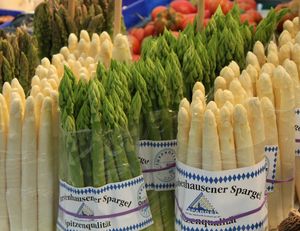“Schrobenhausener Spargel”, “Asparago verde di Altedo” or “Brabantse Wal asperges” are not only names of different types of European asparagus. Their producers succeeded to be granted the protection of a geographic indication (GI). More than 1.440 names of agricultural products are registered in the EU-Database DOOR, not to mention the many wines, spirits and fortified wines that appear in other specific registers.
Andrea Zappalaglio and Suelen Carls, Senior Research Fellows at the Institute know about the economic and legal importance of the sui generis protection of origin. “A GI is first of all a label that protects a geographical name. However, the GI system as a whole constitutes a complex “quality scheme”, related to a number of relevant policies of the EU, especially, although not exclusively, the Agricultural one”, Suelen Carls explains. “There is a value in the origin link that could be used to achieve goals unrelated to the mere market function of the label, such as fostering rural development. However, whether this really works effectively is controversial”, Andrea Zappalaglio, the project coordinator, says.
As part of the EU’s system of intellectual property rights, GIs provide legal protection against imitation and misuse within the EU and in non-EU countries where a specific protection agreement exists. Non-European producers can also be granted with a GI in the EU. Products with GI-labels create a considerable market value by providing the producers a competitive advantage and creating expectations in the consumers as to the characteristics, qualities and reputation linked to the geographical origin and traditional know-how of the goods. India already makes use of GIs, especially for the protection of handcrafts, and, more recently, also China began employing a sui generis system of protection.
An overall assessment
The researchers’ team will conduct an overall assessment of the EU GI system for the protection of agricultural products and foodstuffs. “Using the structure of Regulation 1151/2012 as a trail, we aim to focus both on the substantive nature and on the procedural complexities of this right, from an empirical and comparative perspective”, explains Andrea Zappalaglio.
The researchers will also focus on the future of GIs in Europe. For instance, it will explore and assess the issue of the extension of GIs to handcrafts.

